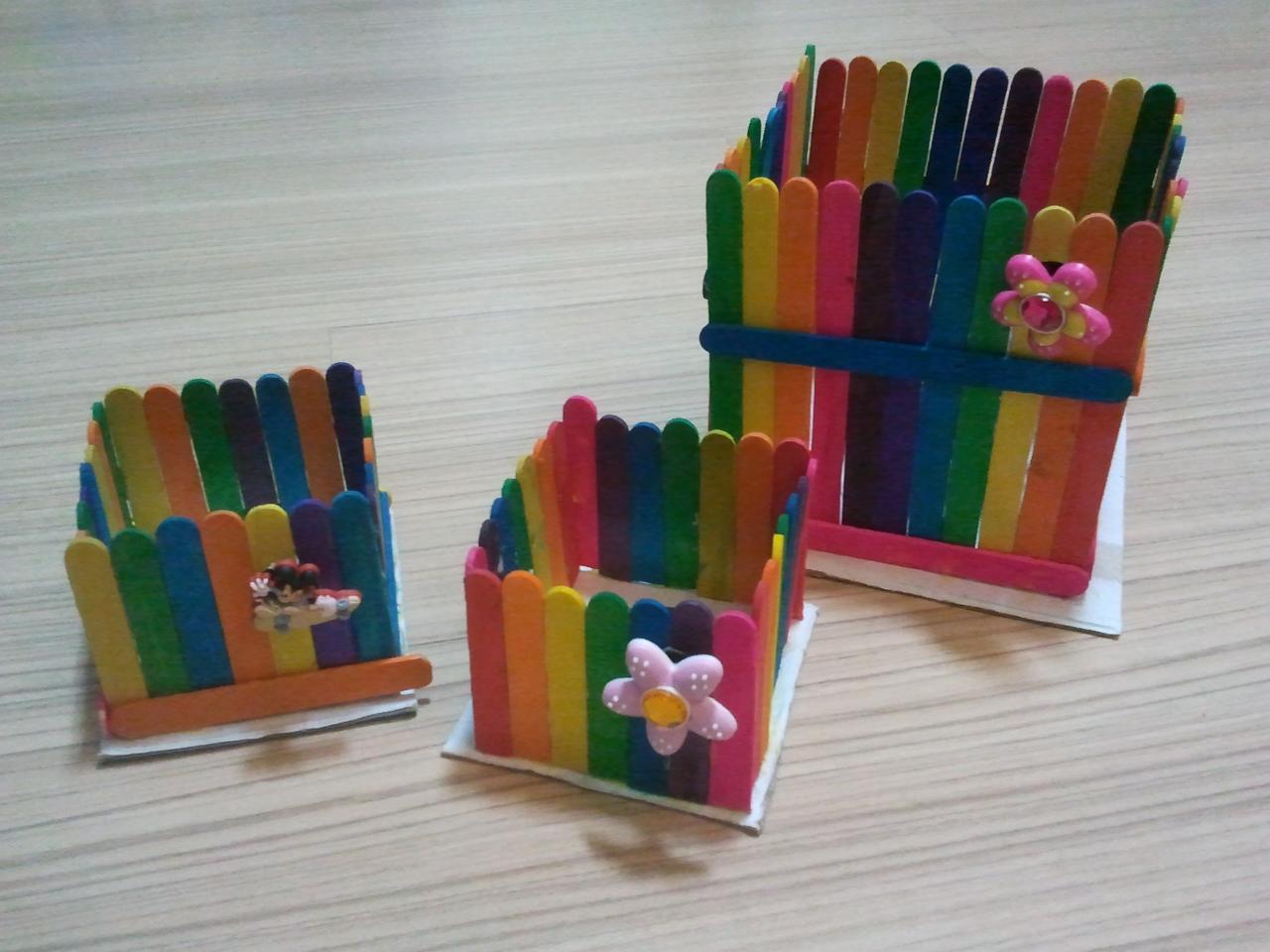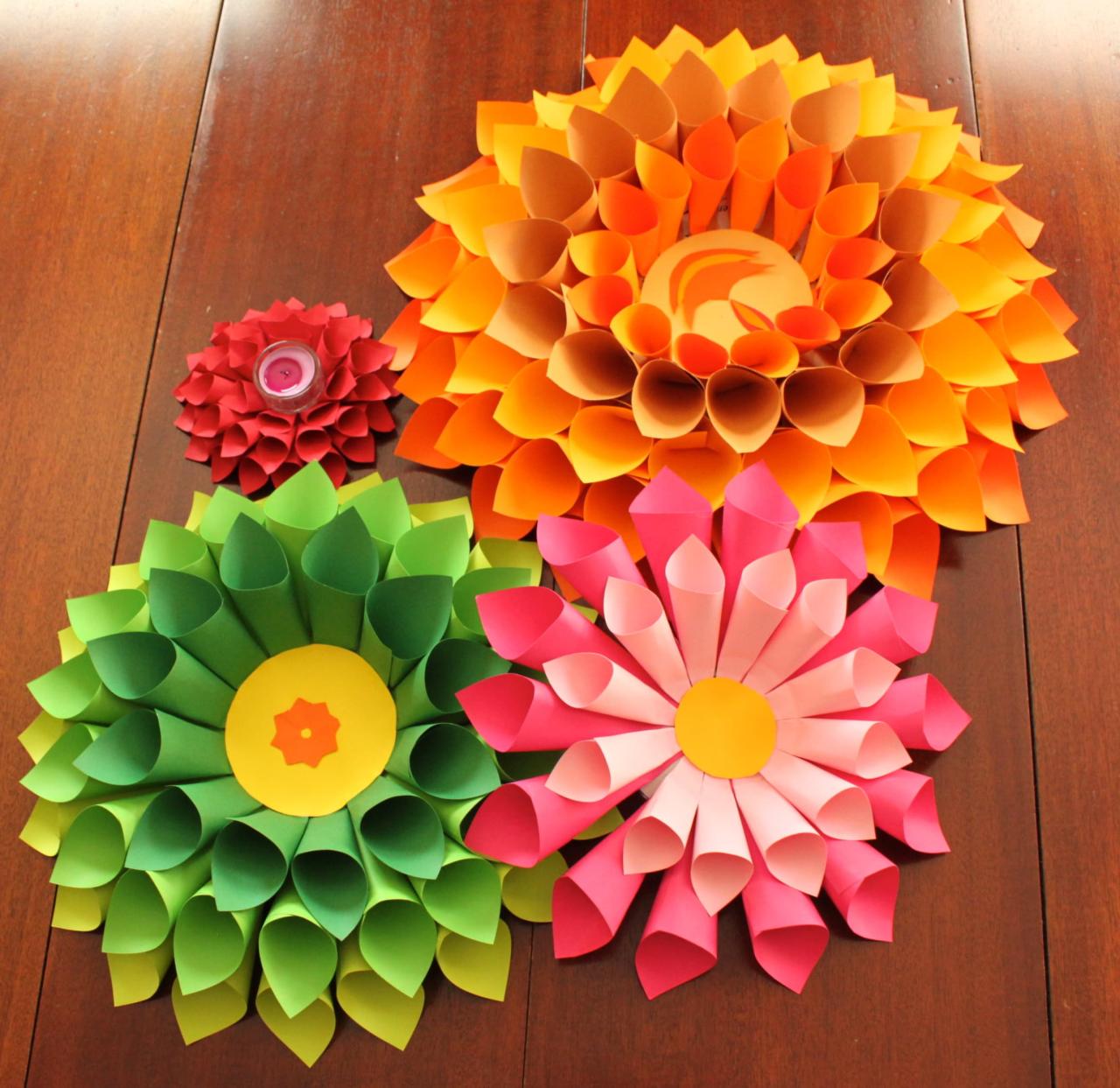New art and craft ideas take center stage, inviting you to explore a world of creative possibilities. Whether you’re a seasoned artist or a curious beginner, this guide offers a wealth of inspiration and guidance for crafting unique and personalized projects. From repurposing everyday materials to incorporating natural elements, the possibilities are endless.
This guide will delve into various art and craft techniques, covering a range of materials, skill levels, and styles. Discover the joy of creating with recycled materials, explore the beauty of nature-inspired art, and learn to personalize your home decor with DIY projects. From paper crafts and textile arts to painting techniques, jewelry making, and sculpting, there’s something for everyone to enjoy.
Nature-Inspired Art
Nature offers a wealth of inspiration and materials for creative endeavors. From vibrant leaves to intricate twigs, the natural world provides an array of textures, colors, and shapes that can be transformed into captivating art pieces.
Using Natural Materials
Using natural materials in art can bring a unique and organic touch to your creations. Incorporating elements like leaves, twigs, stones, and flowers can add a sense of authenticity and connection to the natural world.
Here are some techniques for preserving and using natural materials in art:
- Pressing: This technique involves flattening leaves, flowers, and other delicate materials between absorbent paper or fabric under weight. Pressing preserves the colors and shapes of the natural elements, making them suitable for use in various art projects, such as collages, pressed flower art, and bookmarks.
- Drying: Air drying is a simple and effective method for preserving twigs, branches, and other sturdy materials. To dry materials, simply arrange them in a well-ventilated area away from direct sunlight. Dried natural elements can be used in sculptures, mobiles, and other three-dimensional art projects.
- Resin Casting: Resin casting allows you to preserve natural elements in a clear, durable material. This technique involves embedding leaves, flowers, or other small objects in resin, creating beautiful and unique pieces. Resin casting can be used to create jewelry, paperweights, and decorative ornaments.
Textile Arts
Textile arts encompass a wide range of artistic expressions using fabrics and fibers. They have been practiced for centuries, evolving alongside human civilization and reflecting cultural traditions and artistic sensibilities. These art forms involve transforming raw materials into beautiful and functional objects, encompassing techniques like weaving, embroidery, and macrame, each with its unique history and artistic potential.
Embroidery Techniques
Embroidery is a decorative needlework technique involving stitching yarn or thread onto fabric to create intricate designs. It is a versatile art form that can be used to embellish clothing, accessories, and home decor.
- Surface embroidery is a popular technique where stitches are worked on the surface of the fabric. This technique offers flexibility in design and is suitable for beginners.
- Crewel embroidery is a specific type of surface embroidery that uses wool yarn and a variety of stitches to create detailed designs. It is known for its intricate patterns and rich colors.
- Free-motion embroidery is a modern technique where the fabric is placed on a sewing machine and stitched without a pattern or guide. It allows for more expressive and free-flowing designs.
- Goldwork embroidery is a traditional technique that uses gold thread and metal embellishments to create luxurious and ornate designs. It is often used in religious and ceremonial garments.
Weaving Techniques
Weaving is a textile art form that involves interlacing threads or yarns to create fabric. It is a time-honored technique that has been used to create a variety of fabrics, from simple cloth to intricate tapestries.
- Warp and weft are the two sets of threads used in weaving. The warp threads run lengthwise, while the weft threads are woven across the warp.
- Looms are tools used to hold the warp threads taut and guide the weft threads. They come in various sizes and designs, from simple hand looms to complex industrial looms.
- Plain weave is the simplest type of weave, where each weft thread passes over and under each warp thread.
- Twill weave is a more complex weave that creates diagonal patterns on the fabric. It is often used for denim and other sturdy fabrics.
- Satin weave is a smooth and lustrous weave that creates a shiny surface. It is often used for formal wear and bedding.
Macrame Techniques
Macrame is a textile art form that involves knotting cords or threads to create decorative patterns and objects. It is a versatile technique that can be used to create wall hangings, plant hangers, jewelry, and more.
- Basic knots are the foundation of macrame. They include the square knot, the half knot, and the lark’s head knot.
- Patterns are created by combining different knots in specific sequences.
- Macrame cord is typically made from natural fibers like cotton or jute, but synthetic fibers can also be used.
Creative Patterns and Designs
Textile arts offer a wide range of possibilities for creating unique and expressive designs.
- Geometric patterns are popular in textile arts, often inspired by nature, architecture, and traditional designs.
- Floral patterns are another classic motif used in textile arts, adding a touch of elegance and beauty.
- Abstract designs allow for more freedom of expression and can be inspired by emotions, experiences, or personal interpretations.
History and Evolution of Textile Art Forms, New art and craft ideas
Textile arts have a long and rich history, dating back to ancient civilizations.
- Ancient Egypt is known for its elaborate textiles, often featuring hieroglyphics and intricate designs.
- China has a long tradition of silk weaving, dating back to the Neolithic period.
- The Renaissance saw a resurgence of textile arts in Europe, with intricate tapestries and embroidered garments becoming popular.
- The Industrial Revolution led to the development of new weaving technologies and the mass production of textiles.
- Modern textile arts continue to evolve, incorporating new materials, techniques, and technologies.
Sculpting Techniques
Sculpting is a three-dimensional art form that involves shaping and manipulating materials to create a tangible object. It is a versatile and expressive art form that allows artists to explore various themes and ideas. Sculpting techniques vary depending on the material used, the desired outcome, and the artist’s personal style.
Clay Sculpting
Clay is a versatile material that is widely used for sculpting. It is readily available, relatively inexpensive, and easy to work with. Clay can be shaped, molded, and carved to create a wide range of sculptures.
- Hand Building: Hand building techniques involve using your hands to shape the clay without the use of a potter’s wheel. Some common hand building techniques include pinch pots, coil building, and slab construction.
- Pottery Wheel: A potter’s wheel is a rotating platform that allows you to create symmetrical and circular forms. This technique is often used to create pottery, but it can also be used to sculpt other objects.
- Modeling Tools: Modeling tools are used to refine and detail the clay sculpture. They come in a variety of shapes and sizes, allowing you to create smooth curves, sharp edges, and intricate details.
Plaster Sculpting
Plaster is another popular material for sculpting. It is a quick-drying material that allows you to create detailed and intricate sculptures.
- Casting: Plaster casting involves creating a mold of an object and then pouring liquid plaster into the mold. This technique is often used to create replicas of existing objects or to create sculptures with intricate details.
- Modeling: Plaster can also be modeled directly by hand. This technique is often used to create busts, figures, and other three-dimensional forms.
- Carving: Plaster can also be carved to create sculptures. This technique is often used to create relief sculptures, which are sculptures that are partially raised from a flat surface.
Other Sculpting Materials
In addition to clay and plaster, there are many other materials that can be used for sculpting. Some common materials include:
- Wax: Wax is a malleable material that is often used for sculpting small, detailed objects.
- Wood: Wood can be carved, sculpted, and assembled to create sculptures.
- Metal: Metal can be sculpted using various techniques, including casting, welding, and forging.
- Stone: Stone is a durable material that is often used for sculpting large, monumental sculptures.
Achieving Realistic Textures and Details
One of the challenges of sculpting is creating realistic textures and details. Here are some tips:
- Use a variety of tools: Use a variety of modeling tools to create different textures and details.
- Pay attention to light and shadow: Light and shadow play an important role in creating the illusion of depth and realism.
- Reference photographs: Use photographs of real objects to help you create realistic textures and details.
Closure: New Art And Craft Ideas

As you embark on your artistic journey, remember that creativity knows no bounds. Embrace the joy of exploration, experiment with different techniques, and let your imagination guide you. Whether you’re crafting for personal enjoyment or seeking to create unique gifts, the world of art and craft offers endless opportunities for self-expression and fulfillment.
New art and craft ideas are always popping up, and this year, it seems like everyone is focusing on DIY projects. If you’re looking for a festive way to add a personal touch to your Christmas decor, why not try some DIY Christmas tree decorations ?
From paper snowflakes to repurposed materials, the possibilities are endless. With a little creativity, you can create unique and meaningful decorations that reflect your personal style and bring joy to your holiday celebrations.

